It was dark when I arrived at the project and the other volunteers were all asleep. I had no idea what to expect. This was going to be a whole new experience for me, as I knew nothing about gibbons. I just finished an incredibly amazing holiday with my friends and here I was alone in a strange place. I couldn’t help but feel anxious, had I made the right choice to come here?
My new alarm
I woke up early to a sound, that sounded similar to some sort of siren, it kept going and getting louder. It seemed so close, just outside my window. Unsure what I heard, I went to the main building to find out.
Here I met some staff and volunteers. They told me the sound I heard was the territorial call of the white-handed gibbon. A call I would quickly come to cherish.
Orientation
After having some breakfast I was given a tour of the quarantine area, which was behind our living quarters. I met some beautiful, yet scared and timid gibbons. These gibbons were actually the ones making the territorial calls I had heard earlier the morning.
Walking around the quarantine area and meeting some of the gibbons made me so excited about this journey. My fears and anxiety had past. I was so eager to start learning about these fascinating primates and to get my hands dirty.
- Quarantine Area behind the volunteer accomodation
- Another gibbon in quarantine
My roster would change weekly and included one day off a week, where I could relax, go into town and do some sightseeing. I visited some markets, beautiful beaches and sacred temples during my stay.
- One of the markets in Phuket
- Wat Chalong
- Bang Rong Pier
- Macaques roaming near Bang Rong Pier
- Crazy streets of Phuket
Don’t take your picture with a gibbon!
The GRP has been running since 1992, when it became illegal to own a wild gibbon. Unfortunately poaching baby gibbons still occurs today. This is due to the large amounts of money poachers can make by selling them as pets.
A life high up in the tree canopy quickly turns into a life on the streets and bars of Thailand. Baby gibbons caught in the wild are sold as pets and are used as tourist attractions. Used as photo props, or to entice tourists into local bars.
For every baby found on the street, a family of gibbons have been shot and killed. Only 1 in 3 baby gibbons actually survives the fall when his mother has been shot.
If you are in Asia and see a baby gibbon with his handler on the streets, asking for money to have your photo taken with the gibbon, please be a responsible tourist and report it to the police. Please don’t buy the gibbon!
The GRP currently releases their rehabilitated gibbons into the only national park left on the island of Phuket, known as the Khao Phra Thaeo National Park. Rubber tree plantations have taken over and destroyed all other national parks.
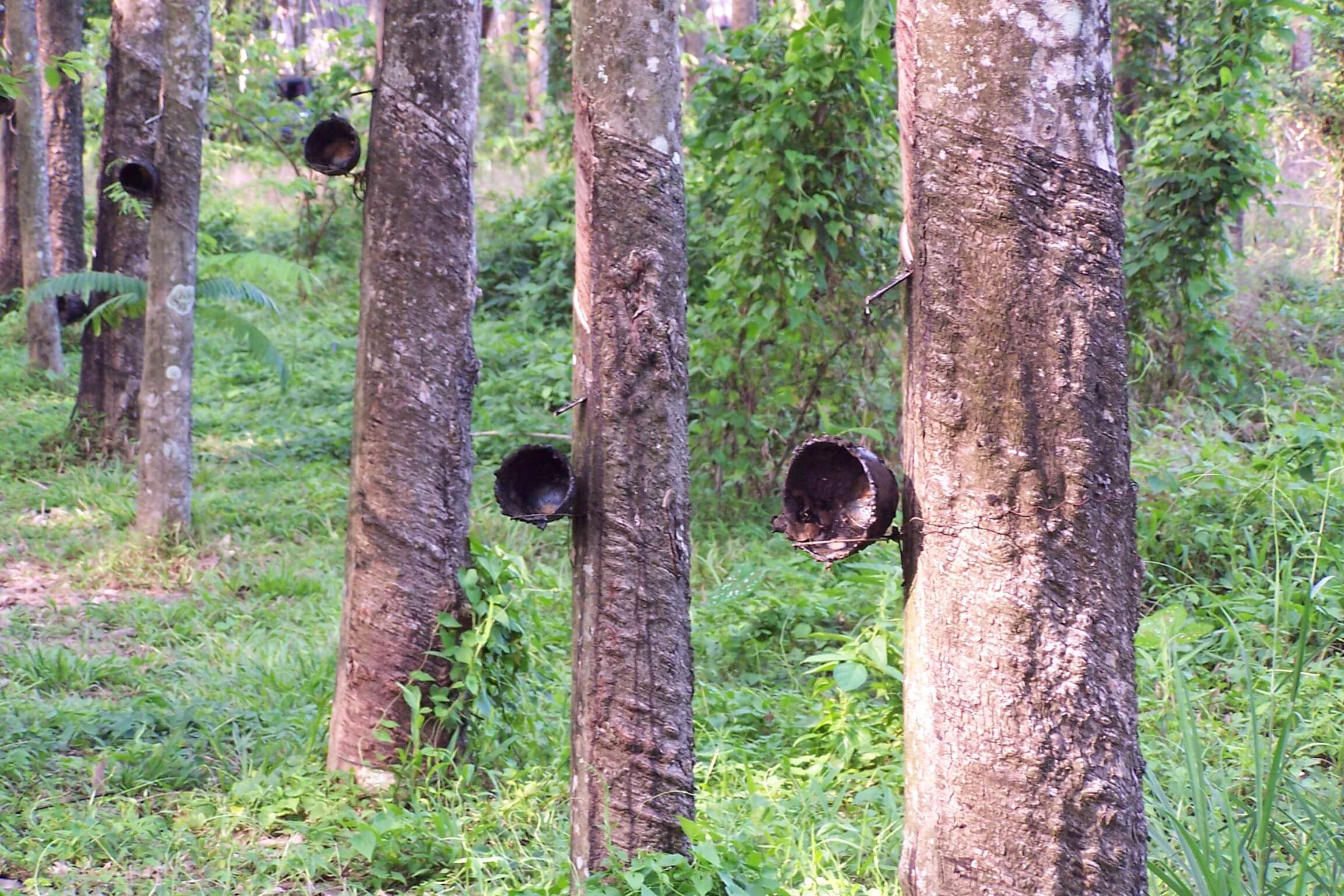
Rubber tree plantation
How do gibbons end up at the project?
Gibbons are either surrendered, confiscated or rescued. Once they have arrived they begin their long journey at the project to hopefully be released. Unfortunately many will never live in the wild, free again, due to the effects of their past.
When gibbons reach maturity (6-7 years of age) their hormones change, they grow large canines and will start becoming territorial and aggressive. Some arrive with their canines filed down or removed, or have missing or deformed limbs from abuse.
Drugging the gibbons is common practice, to help them stay awake after dark or to keep them docile when working on the streets. This is when they catch diseases such as Hep A and B, HIV and Herpes. Gibbons with diseases are not be able to be released due to safety reasons.
- A gibbon being surrendered to GRP
- The start of a long journey for this gibbon at GRP
- Start of her life in quarantine at the GRP
Once a gibbon arrives, what happens?
When a gibbon arrives at the project, rehabilitation begins in quarantine. They are given a full medical examination within a few weeks of their arrival. Those that have contracted any diseases will live their life in quarantine.
Gibbons who are disease free are moved to the rehabilitation site to hopefully one day be released back into the wild. The journey is long, hard and often frustrating for both gibbons and staff alike. Gibbons can live to 35 years of age in the wild, often longer in captivity, which is a big responsibility for the staff.
Many gibbons arrive never having had the opportunity to swing from branch to branch. They have to learn how to drink with their hands rather than from a bottle or through a straw, like they did when used as tourist attractions. They must learn how to act like a wild gibbon again. For some gibbons the larger cages can feel quite overwhelming, after living their life in small bird cages. For some this is the first time they have encountered another gibbon in many years, or heard another gibbon sing.

Still wary of humans
When two gibbons show interest in eachother via mating calls, staff will move them closer together. Introductions take a lot of time and hard work, some have been successful, some haven’t. When gibbons have mated and produced an offspring they will then be released. Unfortunately gibbons cannot be released solo, as their chances of survival are minimal.
Not all gibbons can be released
Each and every gibbon touched my heart in one way or another. I came to love their different personalities and was heartbroken learning about the suffering they endured before they came to the project. There were three that had a huge affect on me; Tam, Bo, and Joy. Although they were disease free, these three were not candidates for release.
Tam
Tam was brutally beaten by her previous owner to the point of needing limbs amputated. She was then introduced to another gibbon, before her time at the GRP, without proper introduction and was bitten badly. Tam now has one leg, and one arm which only has two fingers. After all she went through, she was one of the most patient and forgiving gibbons I met.
- Tam and I – giving her some affection
- Tam and her deformed hand. We powdered it daily to ensure moisture build up didn’t occur between her two fingers
Bo
Bo was released several years ago after being paired with another gibbon. However it turned out Bo was just too reliant on humans. He walked himself back to the rehabilitation site several times, until staff decided to let him stay. He certainly did love any extra attention and would do anything for a back scratch. At the time I was there, we were in the process of introducing Bo and Tam together for companionship.
- Bo being castrated in preparation of being introduced to Tam
Joy
Joy was another gibbon who I had a special bond with. No-one else was able to get close to Joy the way I had. She came from a family who had her as a pet but no longer cared for her. They only fed her a few times a week, living in a small cage, in a dark room all alone.
She became obsessed with food and showed agitated and aggressive behaviour during feeding time. She would not be a candidate for release as she would pose a threat to the human populations living close by to the forest.

It really affected me seeing these gibbons and knowing that they were in this situation due to human ignorance and greed. Although they have suffered immensely, they still had some trust left in us. I just hope the small amount of time I spent in their lives made their days just that bit better. They definitely enriched my life more than I could ever have expected.
Thanks for reading!
To find out what day to day life is like for volunteers, read my next post.
Please leave a comment about anything you read, or if need any advice. I would love to hear from you.
You can join my community on Instagram and Facebook to keep up to date with what I’m up to around the world! xx
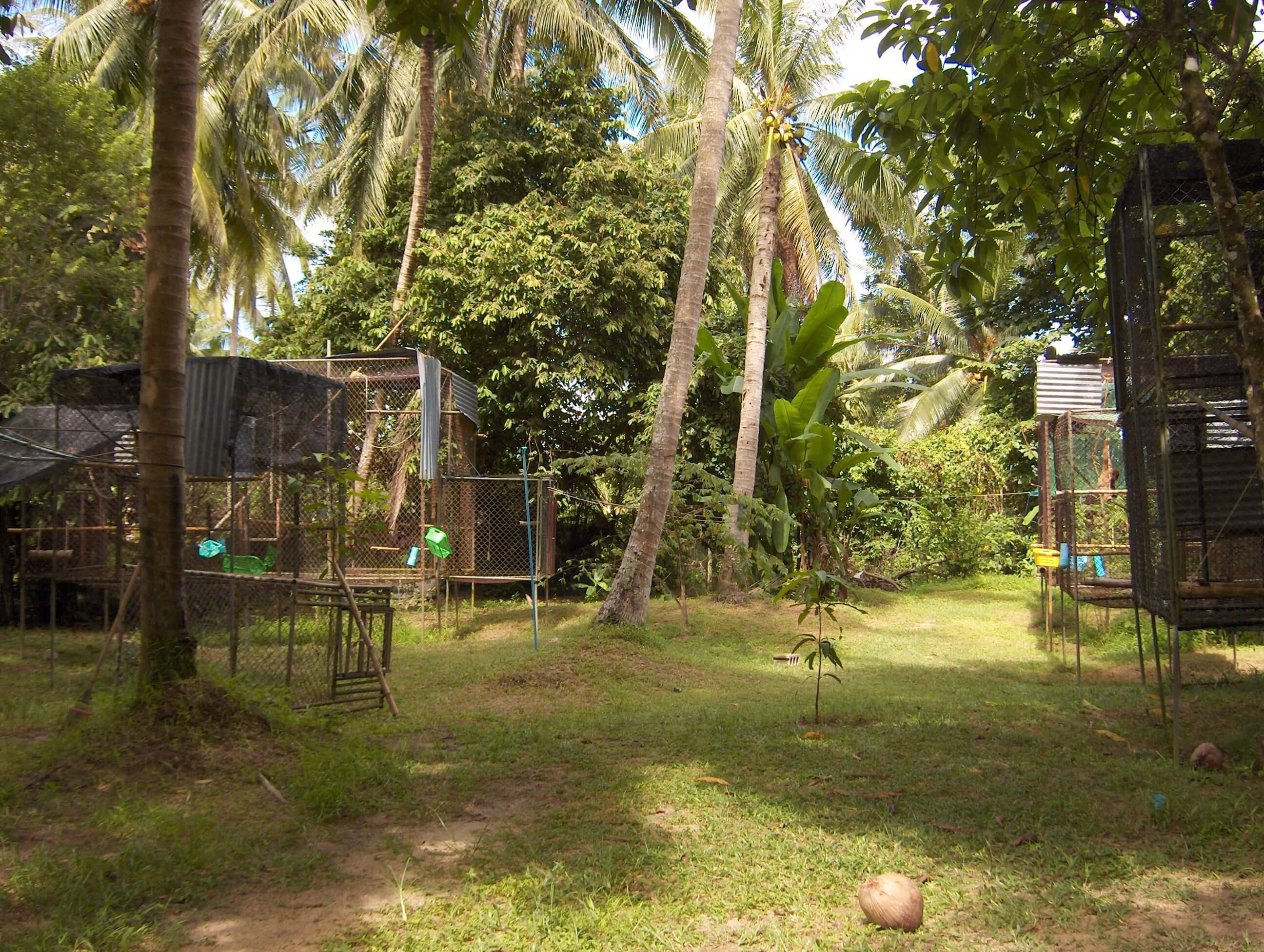
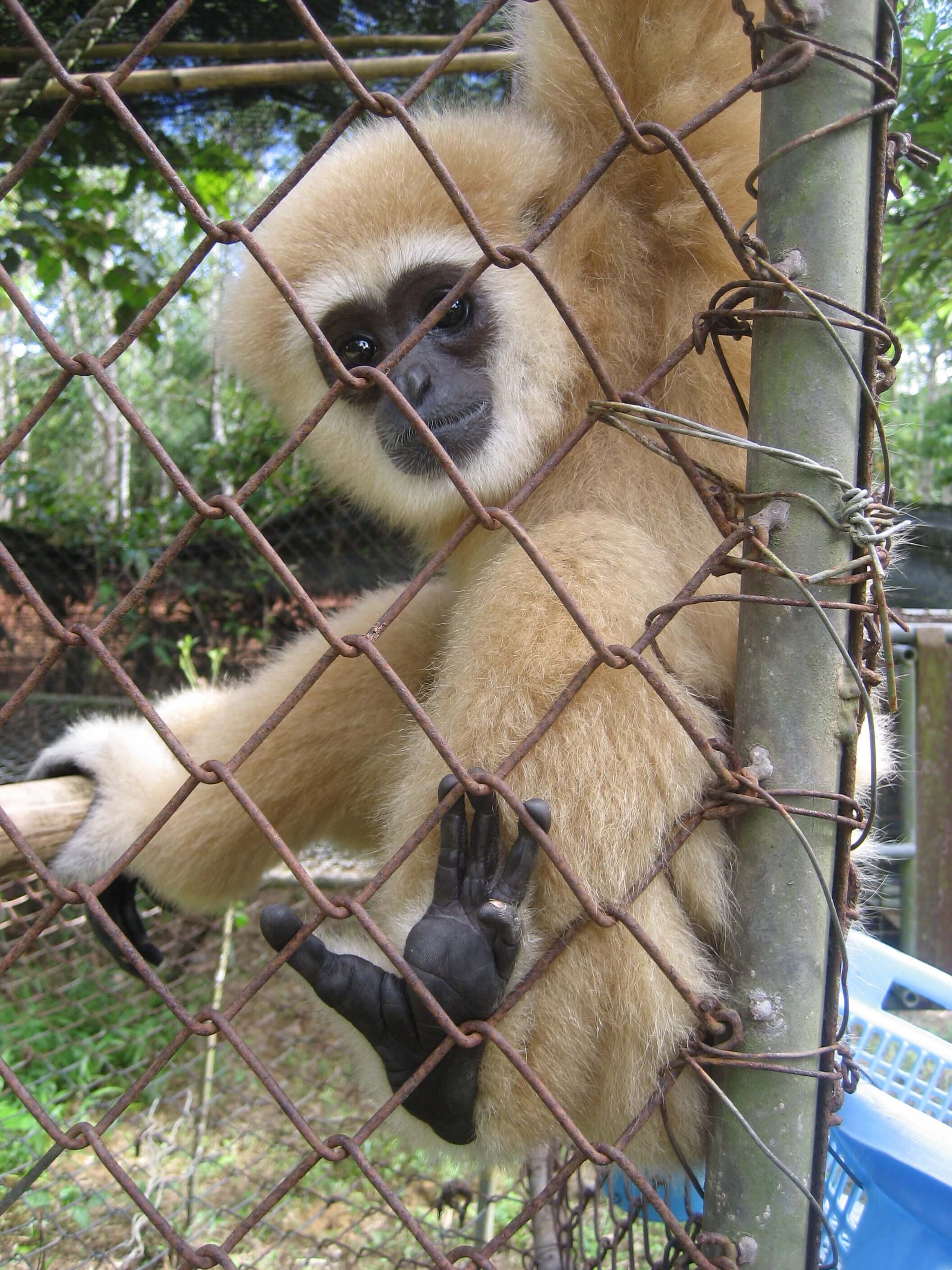
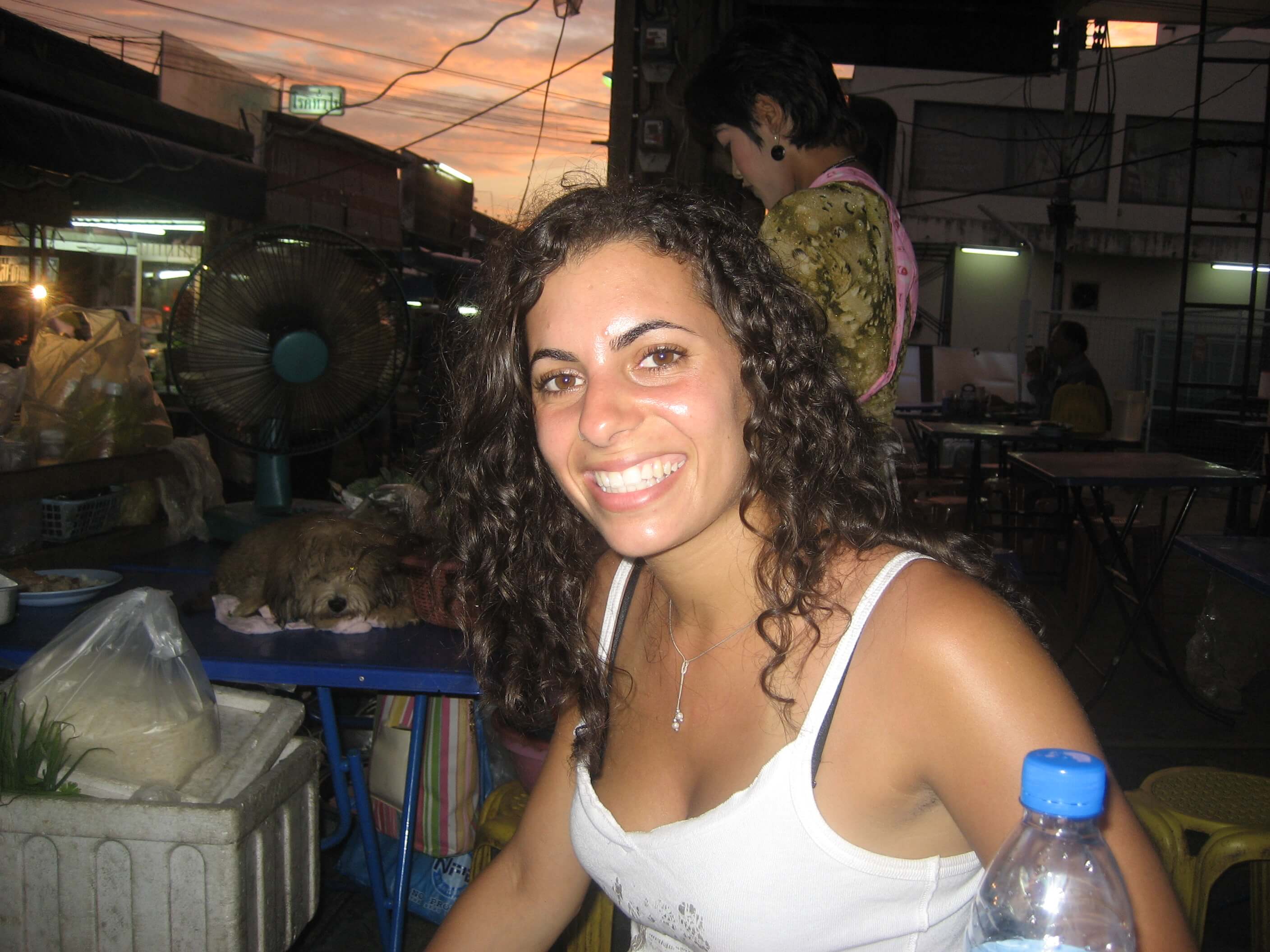
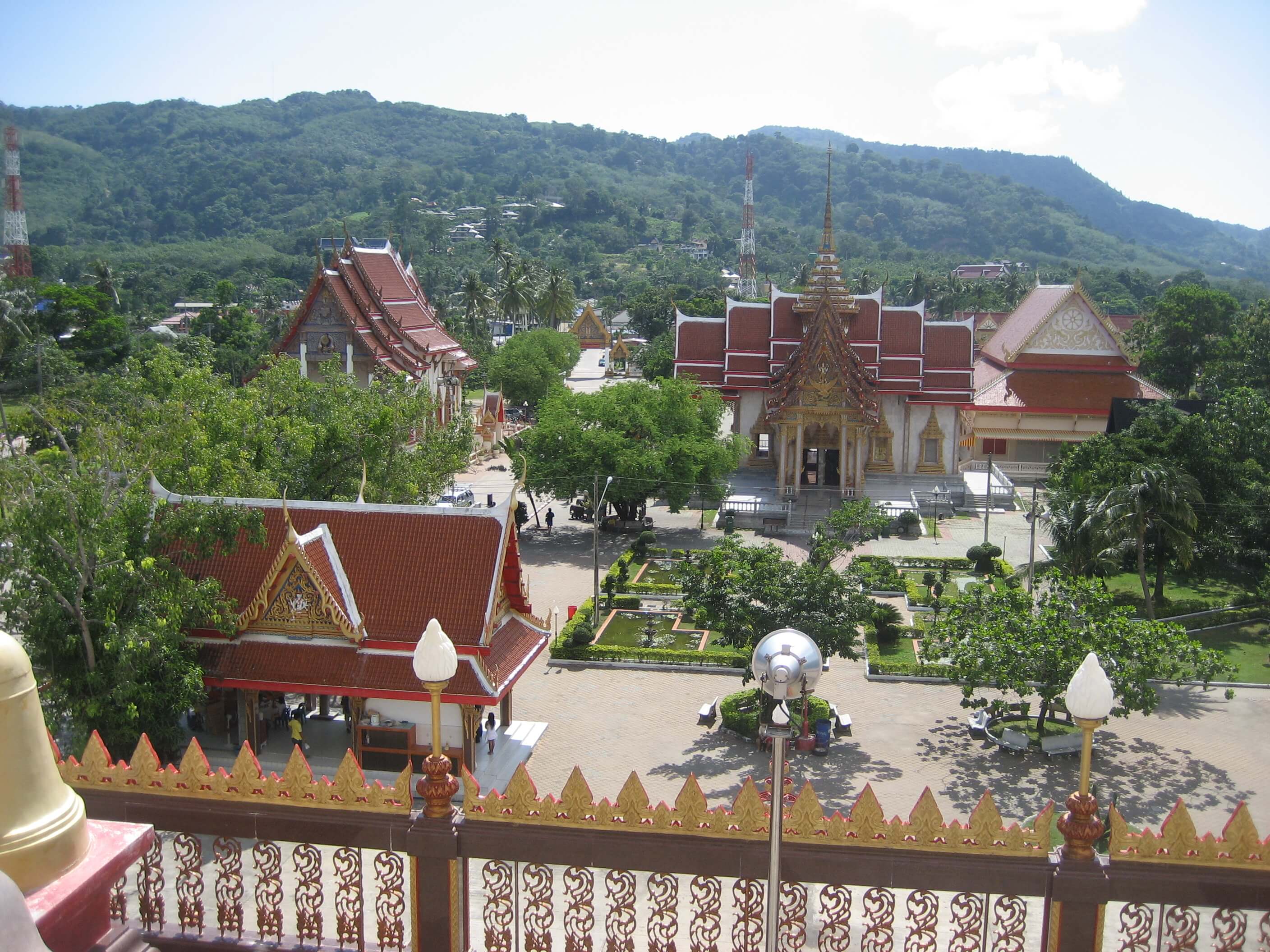
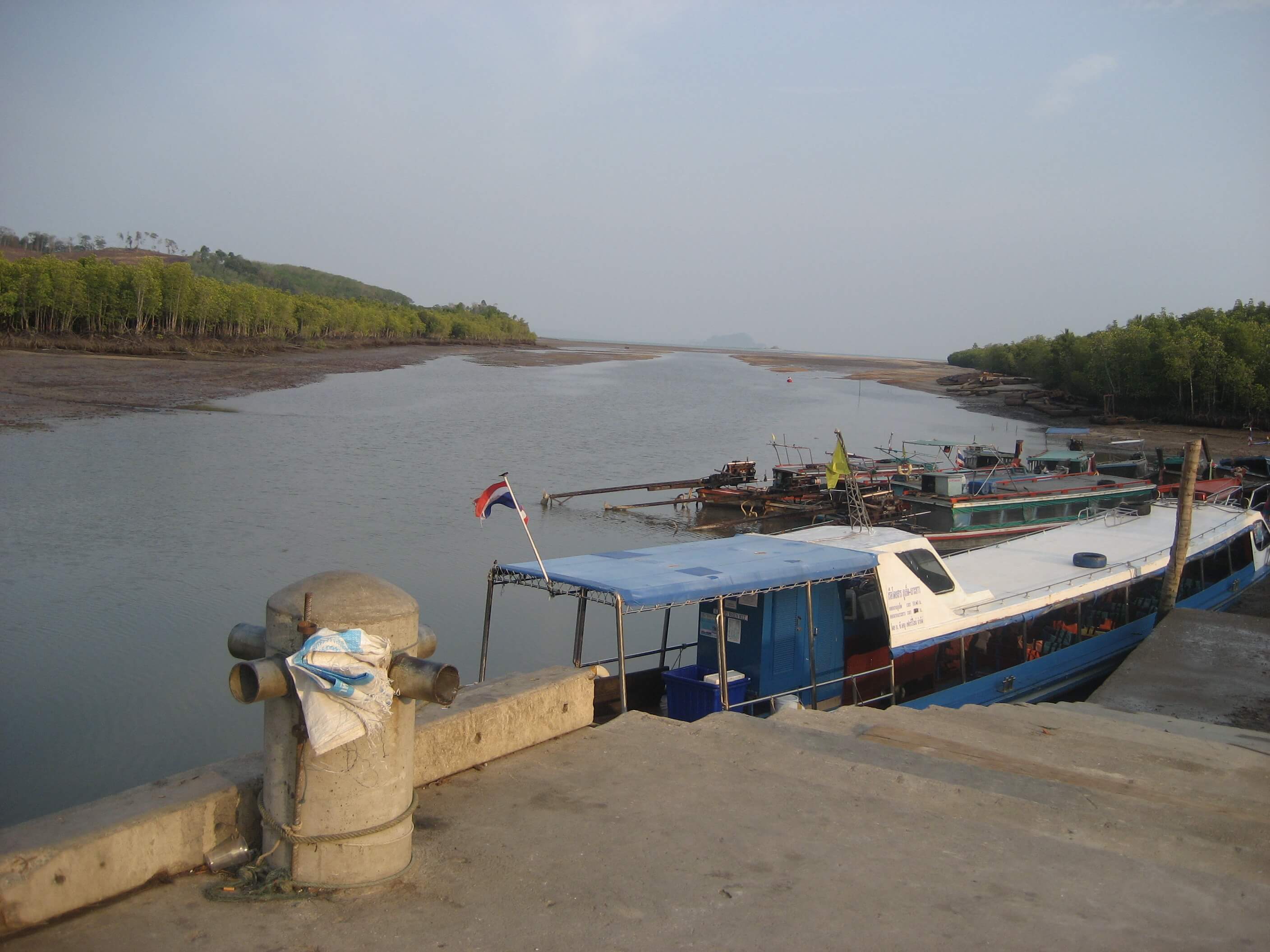
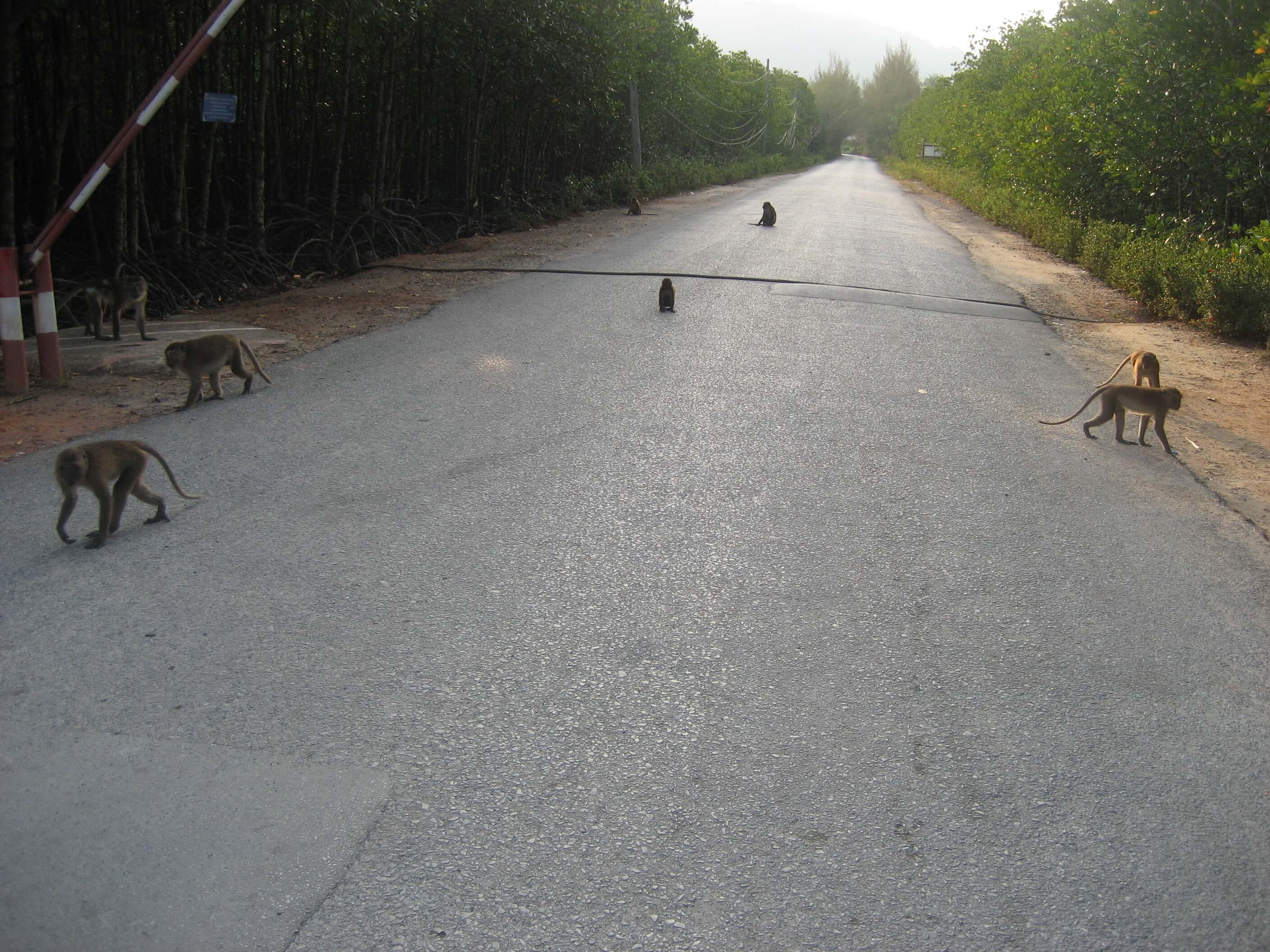
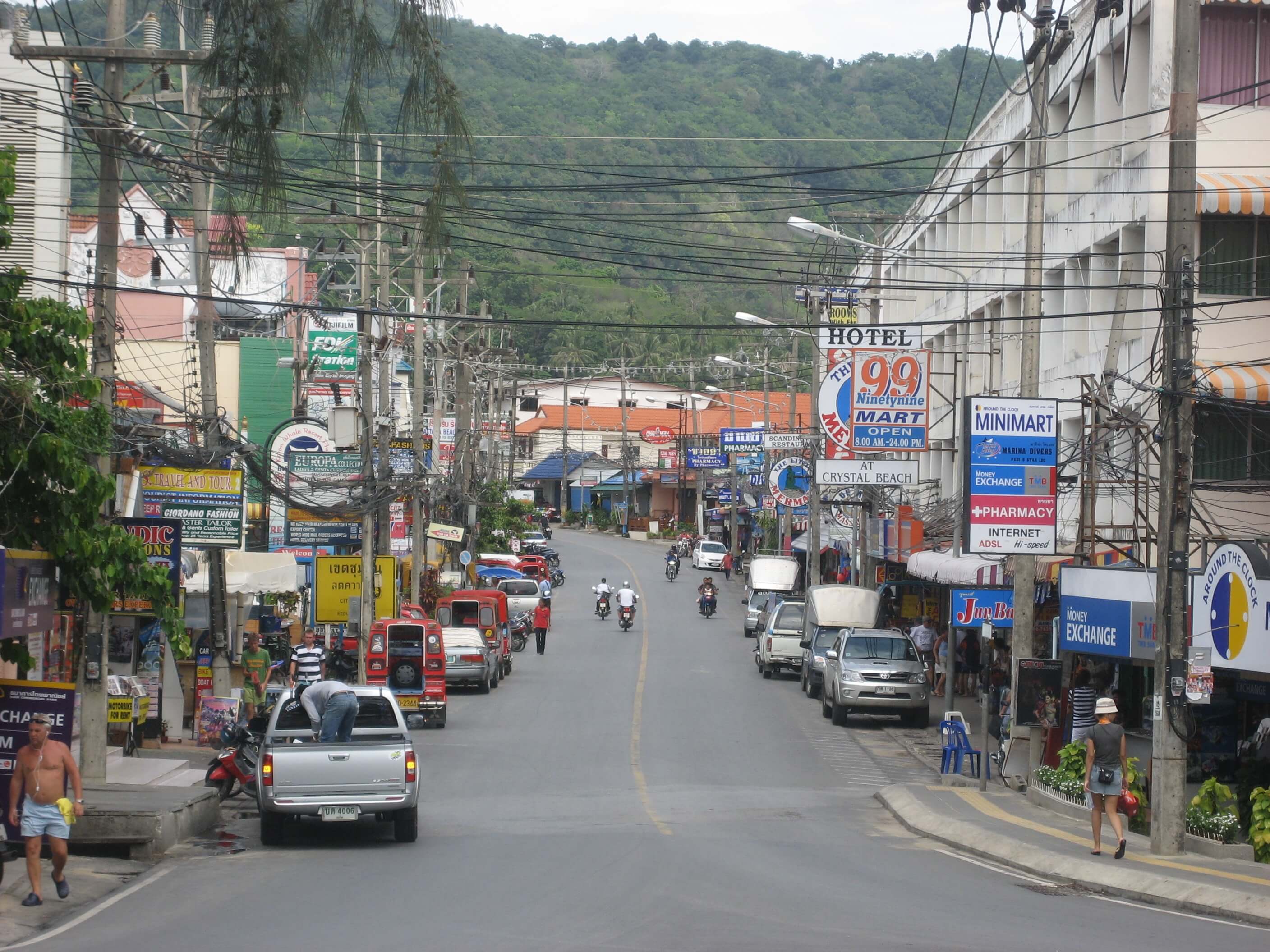
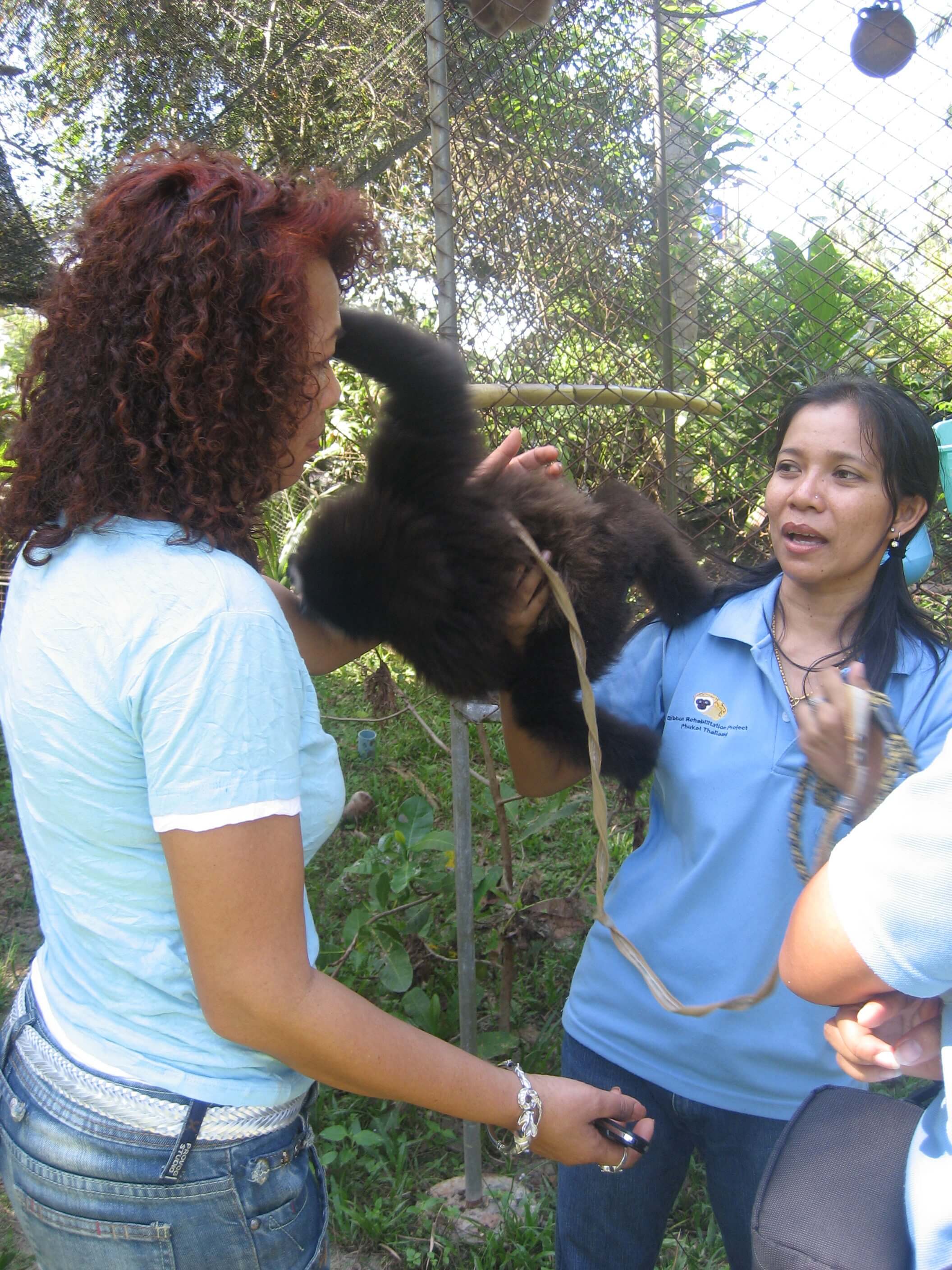
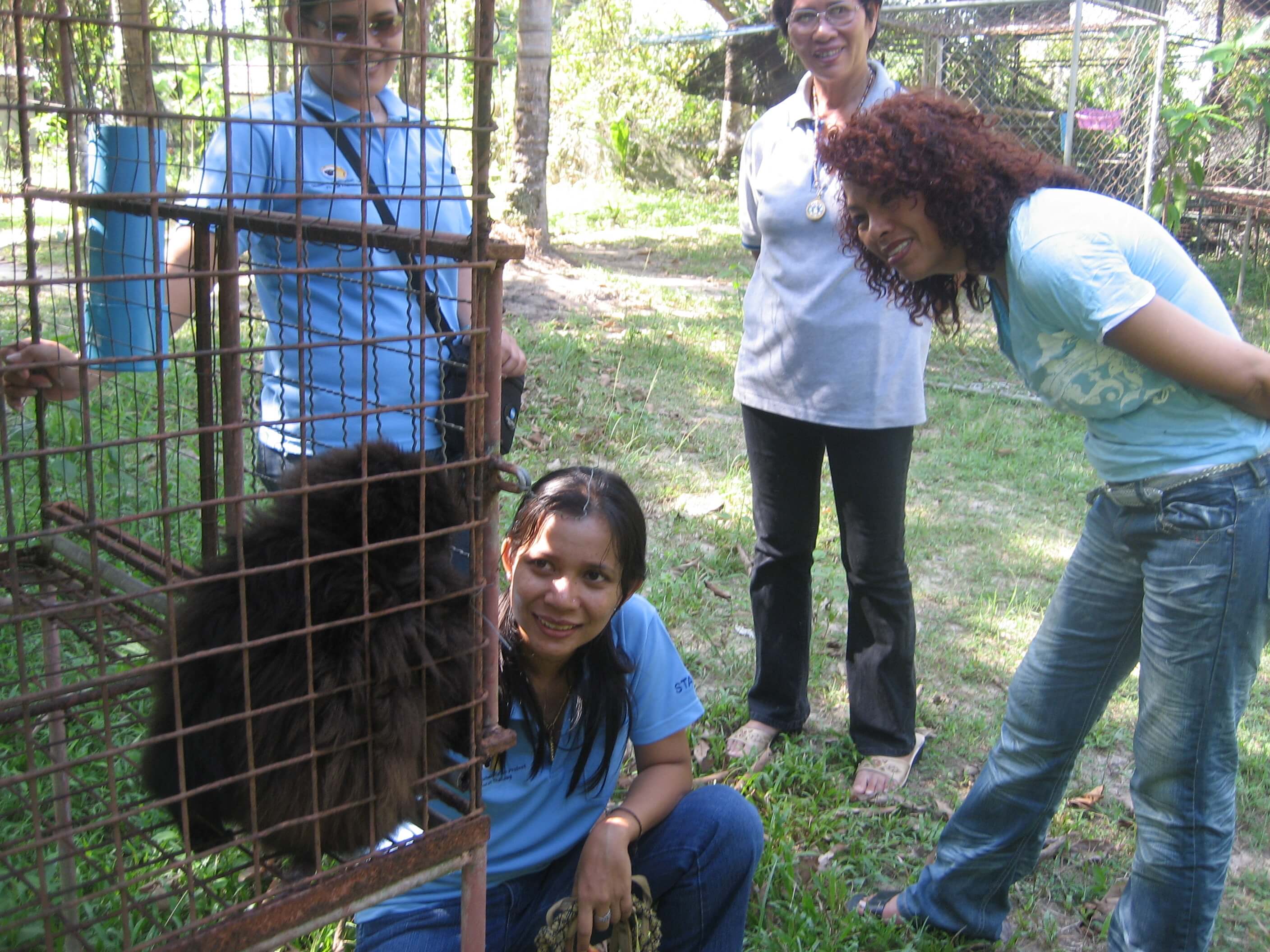
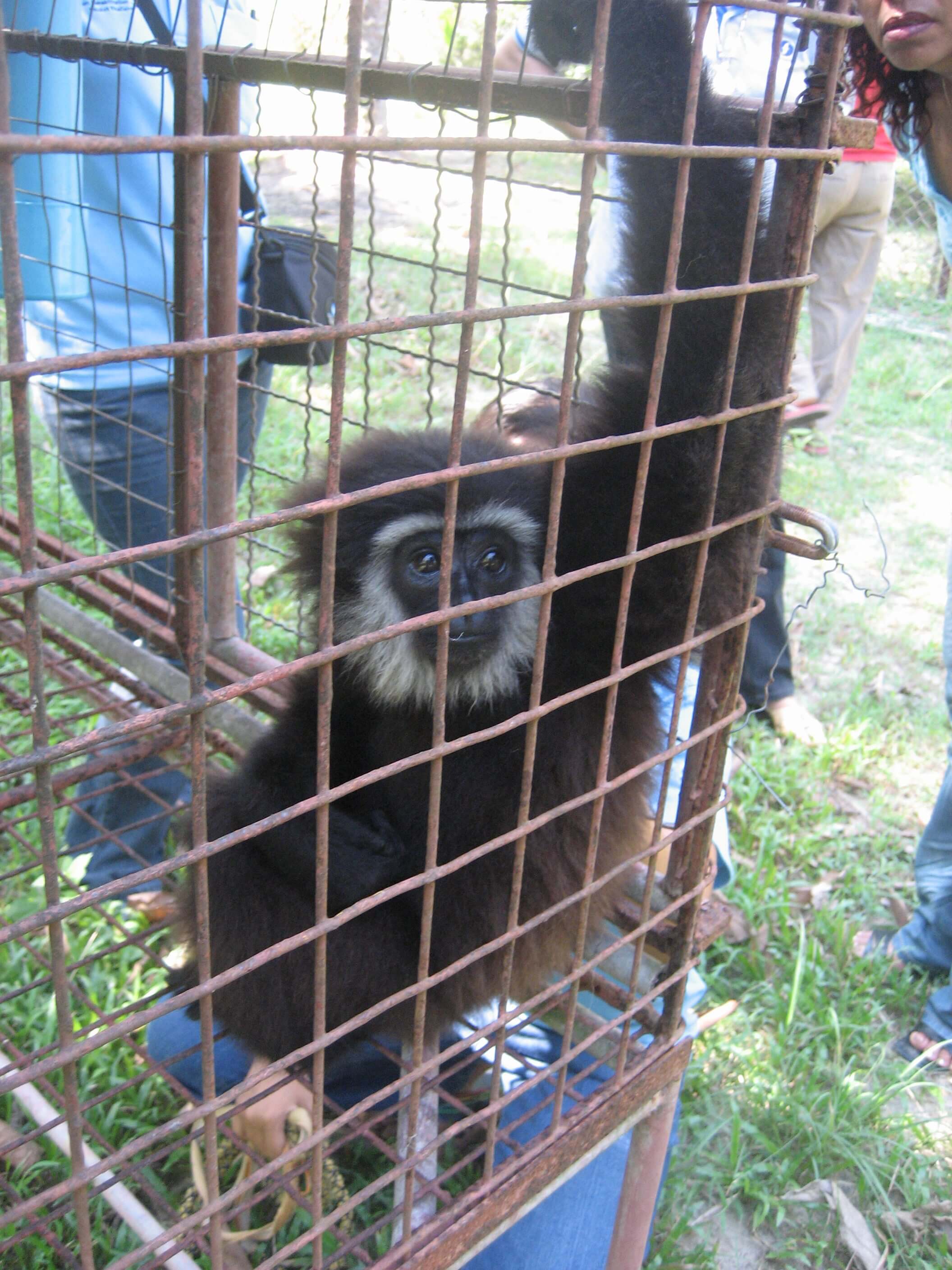
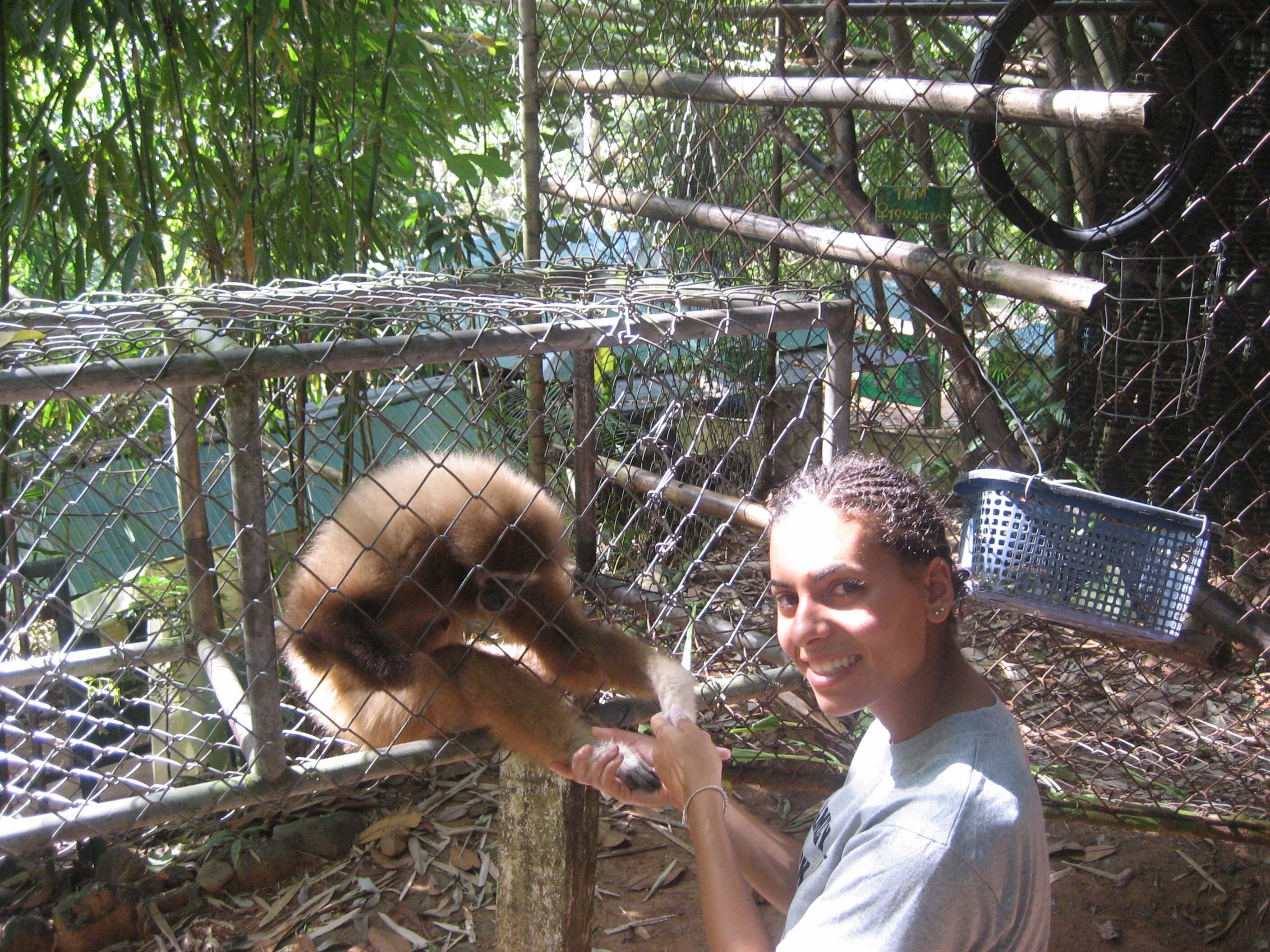
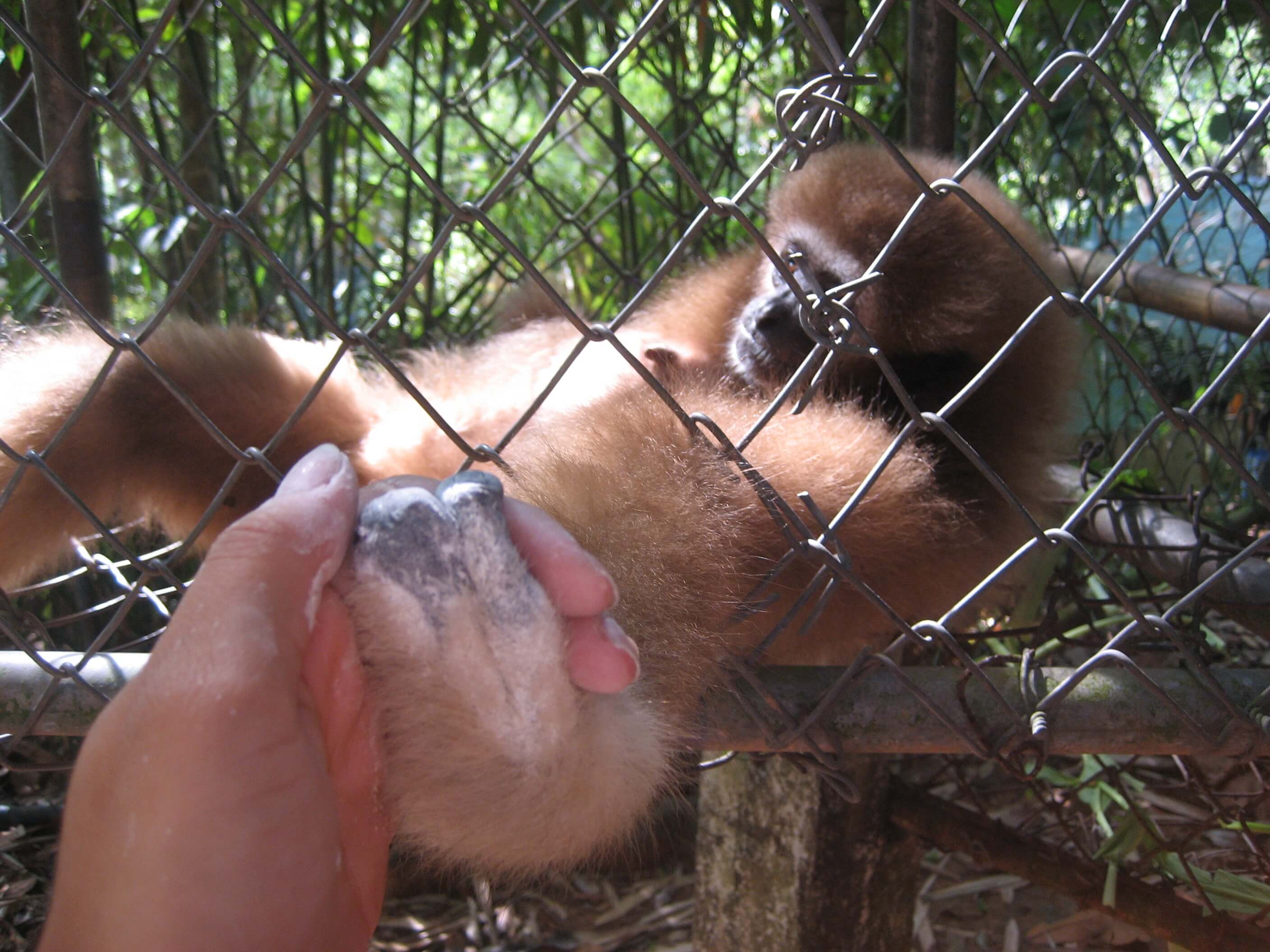
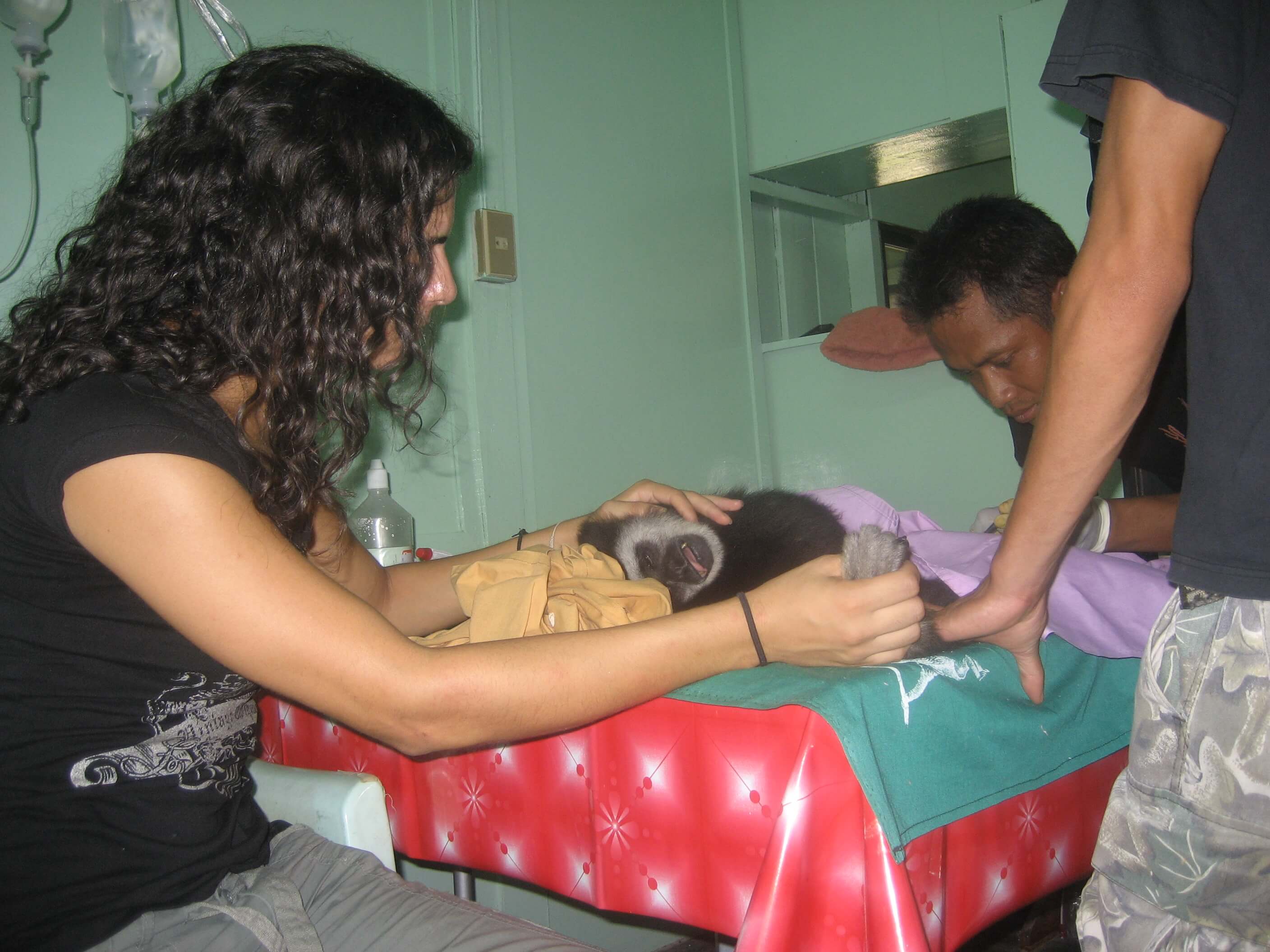
This is great Fee! I would love to do this! Cannot wait to read about your work with Gorillas!!
Thanks Lisa! I’m glad you’ve enjoyed the read. The gorillas were something special, I also cannot wait to share it!
Awesome pictures first of all. Great job at documenting the memories. Great advice of not taking pictures with the gibbons when I go to Thailand in the future. Would not have known that if it was not for this blog and your experiences. Thank you. Sad how people are cruel to animals. Great that there are people like you guys in this world. Maybe education for kids in that region about what GRP does there could be a big impact on the future of wildlife in that area. It is very interesting to see how the gibbons were able to build relationships with the GRP staff. I wonder if they have great memories of you. About how many gibbons were there when you helped out?
Thank you Claudio for your keen interest in this project. I’m glad I have been able to make you aware of some of the issues the gibbons are facing. The project is definitely involved in educating the youths in the area and schools visit the site often. There were approximately 33 gibbons in the rehab site when I was there. Both of these topics I cover in my next post, coming soon!
Oh ok that’s awesome! I’m glad they’re involved. Amazing..33 gibbons. That gives a lot of insight. Thank you for the reply.